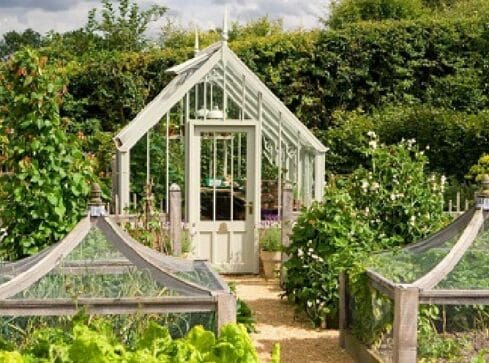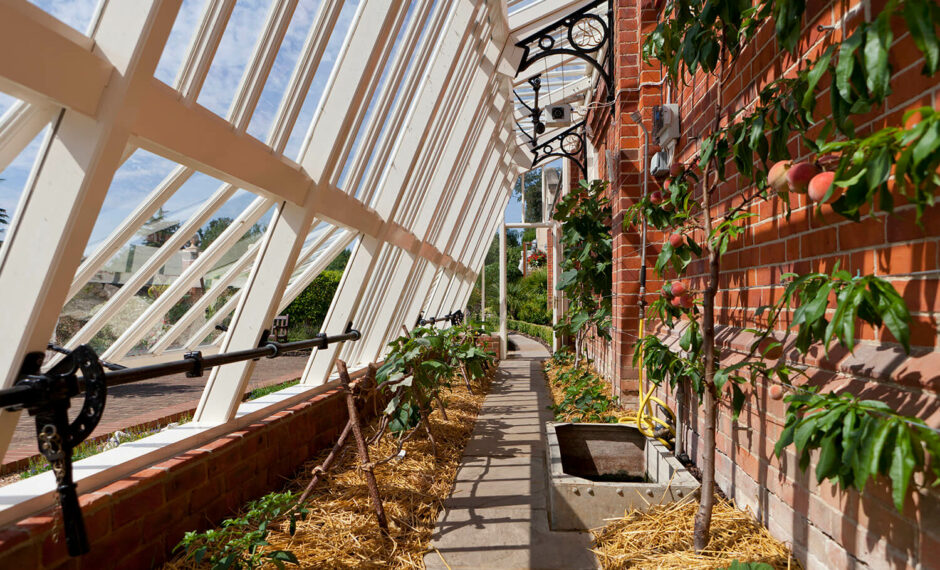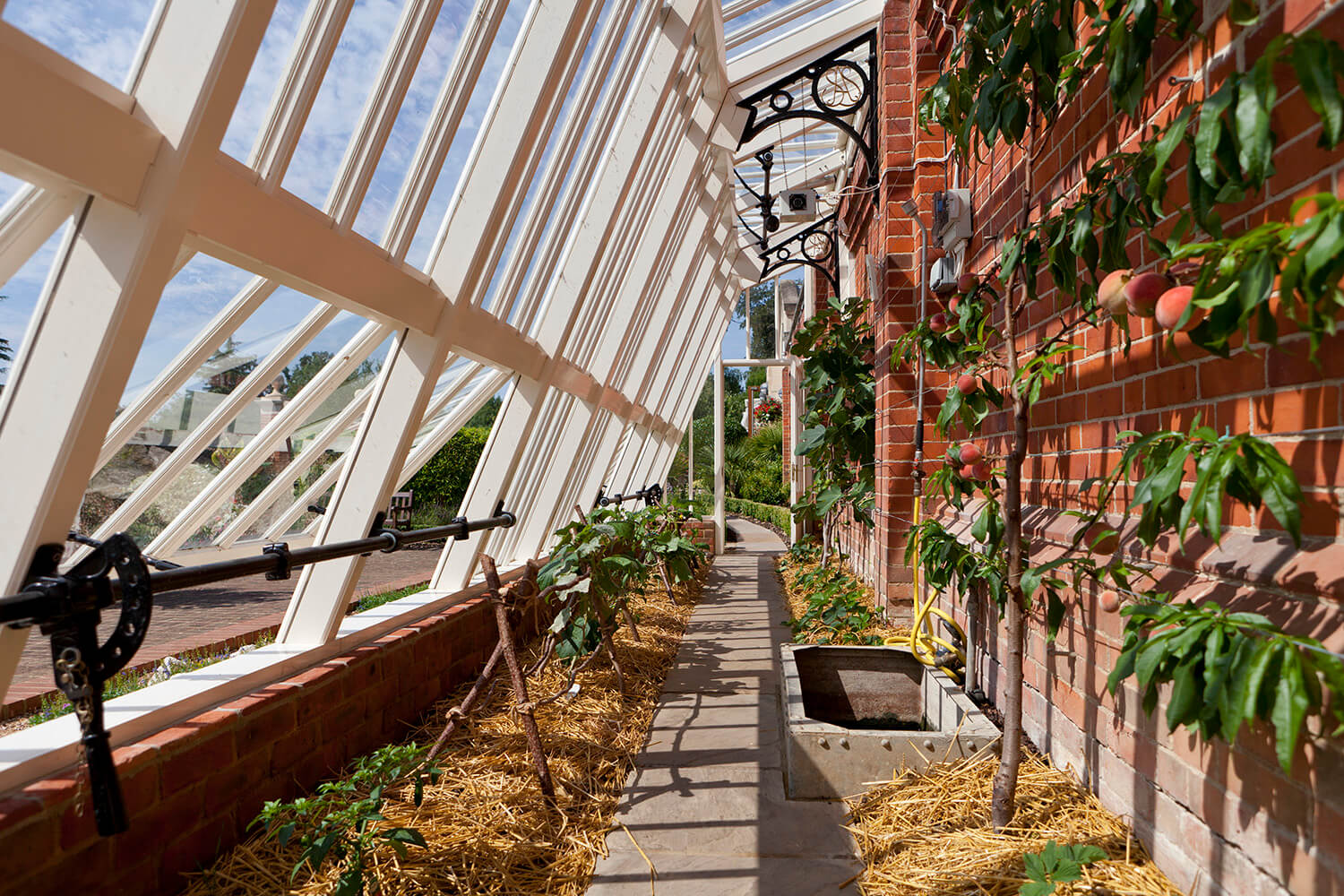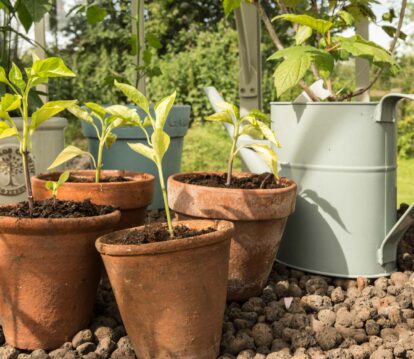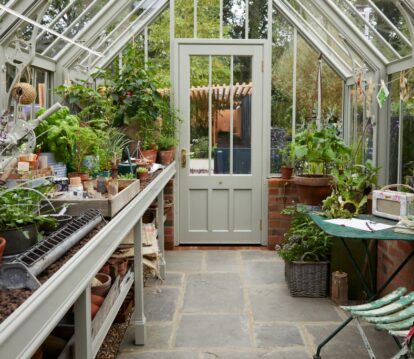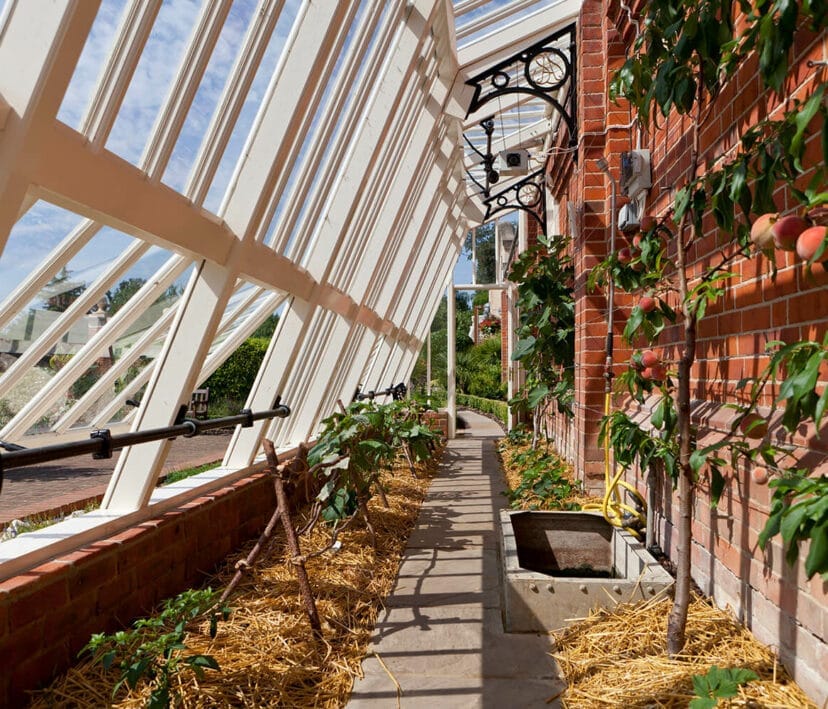
The first time I lay in the shade of a peach tree I’d planted, a glorious early August day it was too, I was dozing in a cloud of peach perfume – the ripening fruit telling anyone who’d listen that they were on their way. A single fruit left the tree and landed in my lap. When that happens, you take it as a sign from even further above that it was meant for you.
I ate it, laughing the mad laugh of someone laughing alone, overcome by the pleasure from soaking my front in its juice. I now know you need to eat a perfectly ripe peach as if leaning forward into a strong wind.
The only way to enjoy a peach or nectarine at its best – to catch it as it falls – is to grown your own. It is not hard work, and the reward is to enjoy a fruit so very different to those in the shops.
Peaches and nectarines are genetically identical, other than a single gene that’s recessive in nectarines resulting in smooth skin, and dominant in the fuzzy-skinned peach. Both can have white or yellow flesh that either grips the seed (clingstone) or separates easily (freestone), any permutation of which can be delicious. Most new varieties of peach and nectarine are thin on flavour; I find the classics more satisfying. ‘Peregrine’ is the peach I find most full of flavour and aroma. The almost as delicious ‘Rochester’ and ‘Redwing’ flower a little later, giving the blossom a better chance of dodging the last frosts, so if you are growing them outdoors or in a cool spot these are very much worth considering. ‘Lord Napier’ is as good a nectarine as you’ll ever find.
Peaches usually ripen during early August – it’s not that we need a longer hotter summer to get the fruit: success is almost always about what happens in spring, so you must plan well. Avoid planting in a frost pocket and exposure to cold easterly winds; this gives the flower a better chance to develop. If you have a wall you can train your nectarine or peach against, even better – it provides shelter and radiated warmth, takes up little space, and allows you to more easily keep the spring rains off than with a tree out in the open. You can go for one of the new dwarf varieties – peach ‘Bonanza’ and the nectarine ‘Nectarella’ are fabulous. They grow happily in pots to perhaps 1.5m in height and spread, and need no pruning yet are highly productive.
Don’t overwater, but do water steadily through flowering and fruiting, using a comfrey tea or seaweed feed once a fortnight. I confess to being a lazy pruner, usually only removing cluttered and crossing branches and anything dead. May is the time to do it.
When that ripening aroma fills your nose – usually late July/early August, depending on the location – you must sit on your hands. A picked peach or nectarine may soften but won’t sweeten from the moment it leaves the tree. When they are ready, the merest breeze, the lightest twist in the palm of your hand – never squeeze them – will be enough for the fruit to let go of the tree. They may develop a warm orange glow to the skin around the time they’re ready. Both peaches and nectarines tend to ripen across the tree in waves rather than at once, so every day pick those at their peak – they’ll keep for perhaps a week in the fridge, though do let them reach room temperature before eating to get them at their finest.
We eat almost all of our peaches and nectarines fresh from the tree, but almost all others I puree, ready for a bellini or two.
Invented by Giuseppe Cipriani of the legendary Harry’s bar in Venice, bellinis are traditionally made only with white peaches but taste equally fine when made with any homegrown nectarines or apricots. Whichever you choose, remove the stones, swizz in a food processor and push the pulp through a fine-meshed sieve. Add a little sugar to any underripe fruit, and refrigerate. Mix one part puree with three parts of whichever form of sparkling takes your fancy and serve. Here’s another version too, if you’ve a few herbs to hand.


